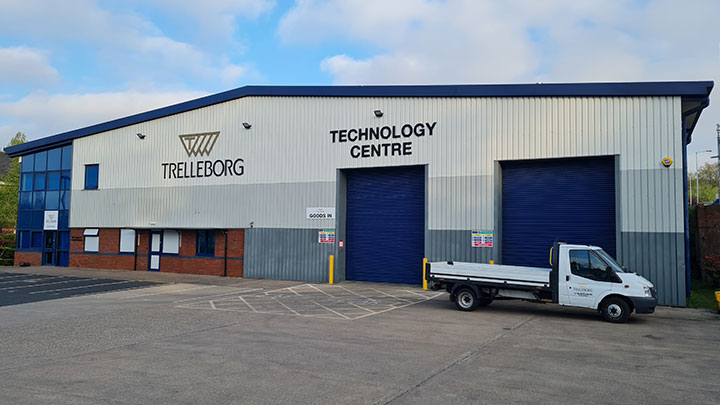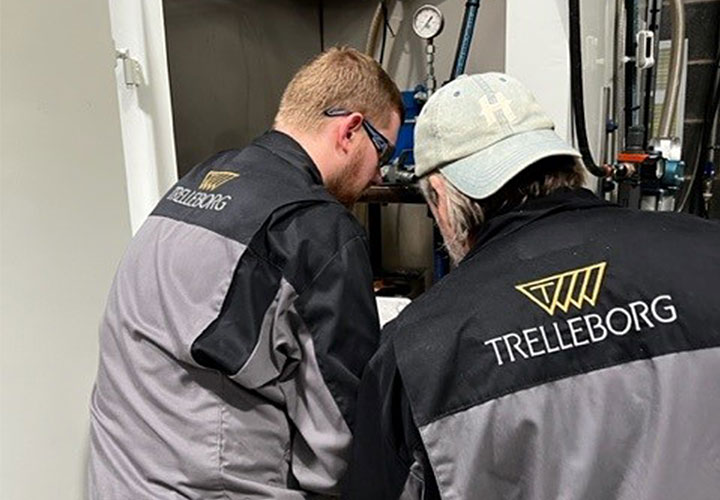Contact Us
How can we help?

Vee Bee Filtration UK Ltd
Unit D5 Coombswood Business Park Coombswood Way, Halesowen, West Midlands , B62 8BH United KingdomTel: +44 1384 378 884

Contamination of foreign particulate is not always visible to the human eye.
When removing an internal part, be sure to utilize Trelleborg services by returning parts to the Vee Bee range facility. An analysis of contaminants can then be performed.
An analysis for metallic, corrosion products and organic contaminants using the most advanced analytic chemistry methods can be provided (IR, SEM & EDS, GCMS).
Based on the results of this analysis, the customer can often pinpoint the failure of upstream components. This enables the customer to carry out the necessary measures to reduce risk of repeated failures.
Qualification of design calculations are checked in first-off designs through to testing the finished product and to destruction in a controlled environment.
Completed designed products are also tested to ensure they meet the most stringent of standard design codes.
This is used to test the manufactured item under pressure - equivalent to or greater than the pressure to be encountered in service.
Most products manufactured endure vigorous testing. Trelleborg Hydrostatic facilities can pressure test up to 910 BarG (13,200 psig) and Pneumatic facilities can test to a pressure of 413 BarG (6,000 psig) nitrogen.
Trelleborg can also offer actual flow proof tests on its in-house liquid flow test rig.
Air proof testing is also available.
Radiography offers a non-destructive method of detecting hidden flaws in materials and fabrications.
A permanent quality record is also provided.
Radiography detects volumetric flaws such as voids, gas pores and solid inclusions.
This is also effective at determining the nature and dimensions (length and width) of flaws.
Radiography cannot be used to measure the dimensions of flaws in the through-thickness direction.
Liquid penetrant testing offers a fast and relatively simple means of surface inspection. This makes it attractive to some industries.
Dye penetrant testing is used as a quick and simple method to ensure welds and other susceptible areas are free from surface-breaking flaws.
MPI is often used to look for cracking at welded joints and in areas identified as being susceptible to environmental cracking (e.g. stress corrosion cracking or hydrogen induced cracking), fatigue cracking or creep cracking.
Wet fluorescent MPI is used to seek environmental damage on the inside of vessels.
Visual examinations check for obvious problem areas, such as leaks, excess vibration or misalignment.
On exposed metal surfaces, visual examination can also be used to check for corrosion. There are various aids to visual inspection such as magnification, devices for measuring pit depths, weld leg length and surface profiles.
Strain Gauges are small bondable sensors applied to the component. Having no mass or significant effect, Strain Gauges do not degrade the performance of the component.
Static or dynamic loads are applied to the component to determine material stress. This allows loads to be applied to a component to simulate field applications. The data is collected and analyzed and is the basis for fatigue evaluations and failure analysis.
Tensile Tests are the most revealing of the mechanical tests and can be performed on a specimen of pipe or tubular material.
By recording gradually increasing applied loads and extensions, a Stress-Strain Graph can be plotted. From this Graph the following values can be computed.
These tests determine the resistance of a material to indentation.
A sample is subjected to sudden force to measure toughness or resistance to shock.
These tests prove the ductility of certain tubular products and confirm the soundness of welds.
Various corrosion tests are available using different corrosive environments to indicate the performance of material under heavy duty applications.
